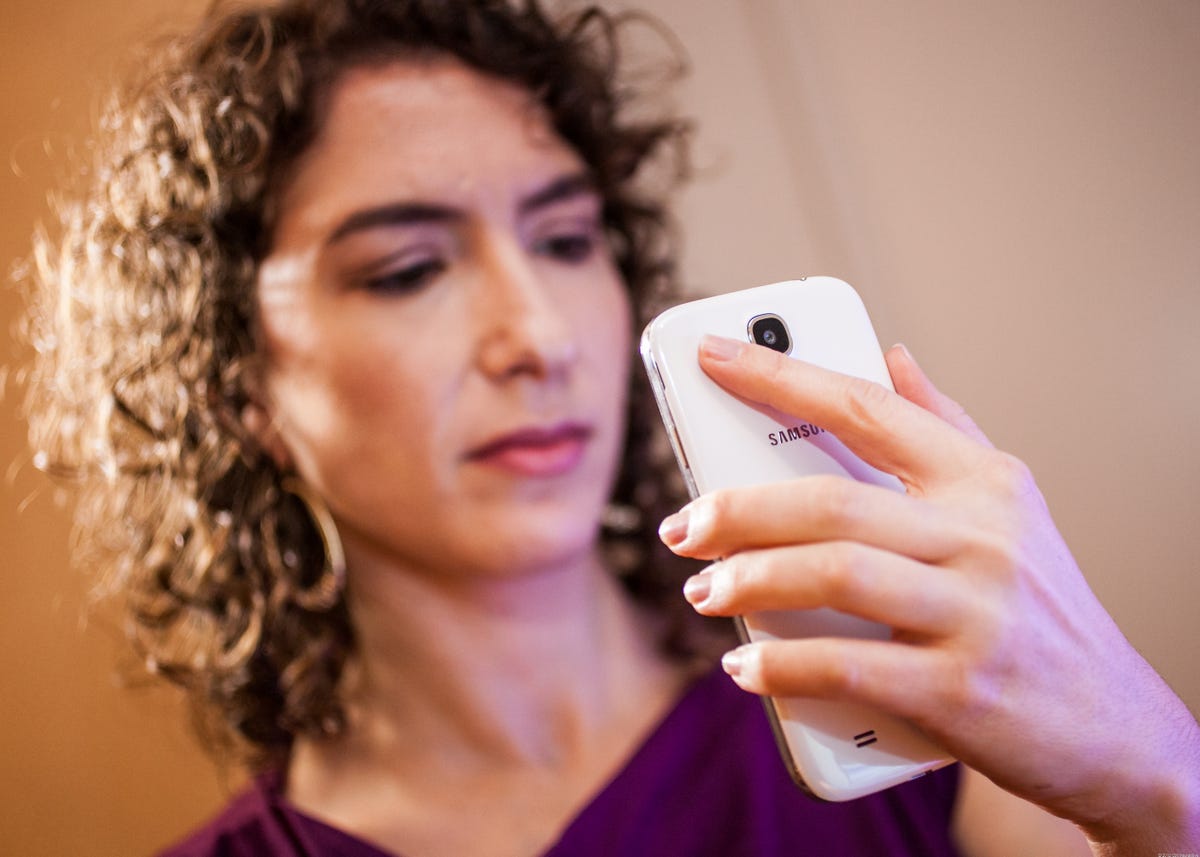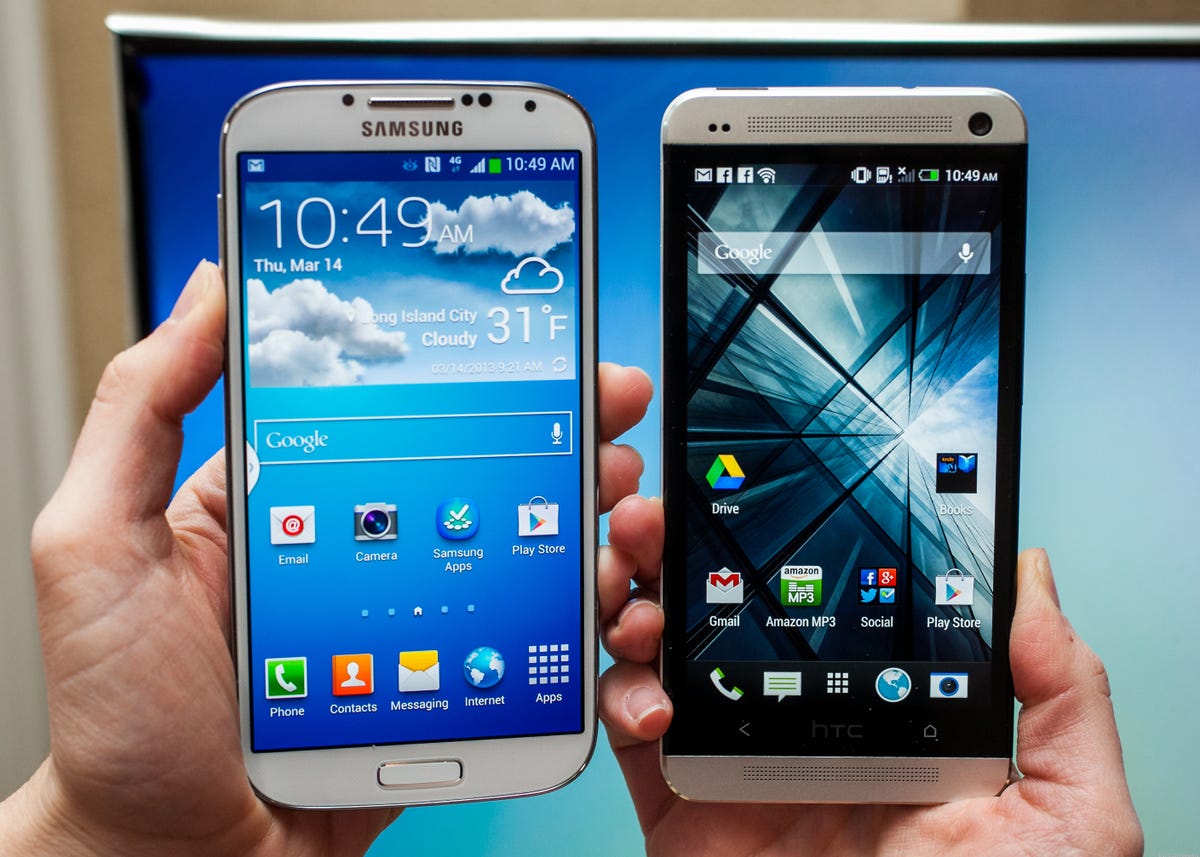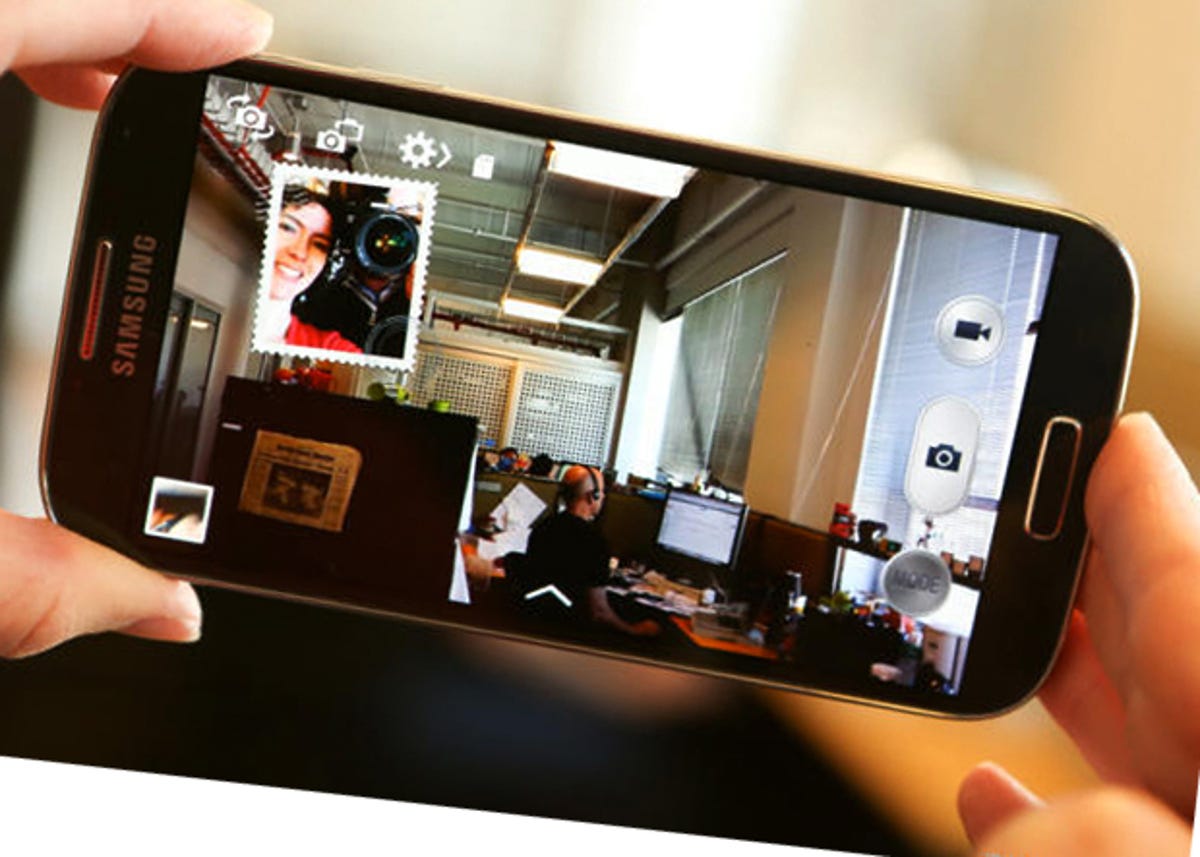

Now playing:
Watch this:
Samsung Galaxy S4 vs. HTC One
7:35
If you’re in the market for a new smartphone this year, chances are good you’re seriously considering the two best Android handsets: the Samsung Galaxy S4 and the HTC One.
Related stories
Both offer tempting helpings of powerful components, advanced features, and cutting-edge software.
So which device should you go with? It’s a tough choice. But fear not: CNET is here to help. Sit back as we stack up all the abilities these excellent phones have in common and the key differences that separate the two.
Screen
Samsung Galaxy S4
Perhaps the most striking thing about the GS4 is its massive 5-inch HD Super AMOLED display. It also features a sharp 1,920×1,080-pixel resolution and a pixel density of 441ppi (pixels per inch).
The GS4’s screen packs a wallop to be sure, with deep blacks and saturated hues, plus sharp detail across the board. However, display geeks will mourn that Samsung’s AMOLED uses a PenTile subpixel layout and that green shades are still a touch oversaturated. A new automatic adjustment mode helps, if you dig it up from the Galaxy S4’s formidable settings list.
The screen is also both dimmer and more reflective than other phones, though the Galaxy S4’s display marks a significant improvement in both of these weak spots over the Galaxy S3.


Now playing:
Watch this:
Introducing Samsung’s Galaxy S4
3:02
HTC One
HTC gave the One a 4.7-inch LCD screen that’s slightly smaller than the Galaxy S4’s but also boasts the same 1,920×1,080 HD resolution. As a result, the HTC One’s display has a higher pixel density of 468ppi. The One’s screen is bright and beautiful, colors are accurate, and text looks crisp.
Assessment
Both phones have advantages on the specs fight: the Galaxy S4 is a tad larger (if that’s your thing), whereas the One’s slightly smaller 1080p screen offers slightly greater pixel density. Typically, OLED screens offer more-vibrant colors, deeper black levels, and wider viewing angles versus LCD screens, and Samsung is at the forefront of OLED research.
The GS4 has the edge here when it comes to pleasing colors, and you’re able to decrease its screen’s color saturation in the settings for better accuracy, as you can do with Samsung’s Galaxy Note 2. However, the One takes the prize for its absolute brightness quotient and its less distracting reflectiveness.
Meet the stunning Samsung Galaxy S4 (pictures)






Storage
Samsung Galaxy S4
The GS4 comes in 16GB, 32GB, and 64GB configurations, but good luck finding the 64GB version. U.S. carriers and retail shops will sell the GS4 in the smaller capacities, starting at $150 for the 16GB version and averaging closer to $199. Find out where and when to buy the GS4 here.
Unlike HTC, Samsung isn’t a fan of sealing up devices; as a result, the Galaxy S4 comes with a microSD card slot that can handle up to 64GB of additional storage goodness for photos, videos, games, and apps.


Now playing:
Watch this:
Sprint’s HTC One is stunning, fast, and feature packed
2:53
HTC One
One consequence of the HTC One’s beautiful, aluminum unibody design is that its chassis is sealed. Add in the phone’s thin construction, and you’ve got no room for a microSD card slot to add extra storage. HTC does its best to alleviate the situation by eschewing a 16GB model and packing the handset with either a sizable 32GB, or a whopping 64GB of internal memory. Significantly, the on-contract price of the 32GB One starts at the same $199 price you’d pay for a 16GB Galaxy S4.
Assessment
This ultimately comes down to personal preference. If you’re the type of mobile user who constantly swaps SD cards between devices, or prefers to drag and drop large files from PC to phone, then the Galaxy S4 is a better fit. Of course, you could spring for the premium 64GB HTC One, although we think that the 32GB version is plenty for most people. The affordable price of the 32GB HTC One certainly helps soften the blow, too.
Hands-on with the sleek, gorgeous HTC One (pictures)






Battery
Samsung Galaxy S4
Samsung equips the Galaxy S4 with a removable 2,600mAh battery. It pops out when you take off the back cover, which makes swapping it out for a fresh one a simple maneuver. Samsung will also sell separate battery covers that are compatible with wireless charging.
HTC One
In contrast, the HTC One features a slightly lower-capacity 2,300mAh battery, which is embedded. That means you can’t remove it on the fly for a fully charged battery pack. Also, if the HTC One’s battery fails, you’ll need to send the device in for repair, or replace the phone for a fresh handset.
Assessment
The iPhone has proven that a sealed battery is far from a deal breaker. And the HTC One demonstrated solid battery life, lasting for 9 hours and 37 minutes on our CNET Labs Video Playback benchmark. However, HTC lacks Apple’s retail infrastructure — meaning you can’t make a trip to the neighborhood Apple store if the One’s battery ever gets wonky. The Galaxy S4 definitely offers more flexibility on the battery front.
Samsung Galaxy S4 accessories (pictures)






Android version
Samsung Galaxy S4
Right out of the box, the Galaxy S4 will run Google’s latest version of Android Jelly Bean, Android 4.2.2. That’s great news for Android fans who can enjoy the all important bragging rights that come with owning a cutting-edge smartphone. However, Samsung does have its own, rather heavy TouchWiz interface, so you’re not getting a pure Android Jelly Bean experience (more on this below.)
On the other hand, TouchWiz makes the boatload of GS4 features possible, including the truly useful pop-out menu of over a dozen one-touch settings toggles.
HTC One
The HTC One uses the slightly older iteration of Jelly Bean, Android version 4.1.2. Nevertheless, the device does support the enhanced Google Now search function, which can also be used as a dedicated widget on the phone’s home screen. Of course, HTC layers its latest, fresh-feeling Sense 5.0 user interface over Android, which many have blamed for holding up Android updates in earlier HTC smartphones.
Assessment
When you get down to it, the difference between Android Jelly Bean 4.1.2 and 4.2.2 isn’t earth-shattering, but Google has added plenty of bug fixes, including a big one to address audio streaming over Bluetooth. There are also UI enhancements, too, such as the ability to access the camera and other apps from the lock screen. Perhaps the bigger issue is that we expect an even newer version of Android known as Key Lime Pie to debut before the end of May; when it will make it to either phone is anybody’s guess.

Sarah Tew/CNET
User interface and usability
Samsung Galaxy S4
There’s no mistaking the Galaxy S4’s highly stylized TouchWiz interface. Samsung digs deep to give the Galaxy S4 a dizzying array of extra software features.
Whether you use them all — or even know about them to begin with — is another story.
Oodles of new camera and video modes let you play with your pictures, and gestures such as eye tracking play an even larger role in this new superphone. The Group Play sharing feature also expands on past features to give GS4 owners in a group the ability to simultaneously play the same content like music and games, without the need for data or Wi-Fi connections.
Not to be outdone by Nokia, Samsung blesses the GS4 with a sensitive screen you can navigate while wearing gloves. A fitness app, S Health, and several body-conscious accessories take Samsung into new territory.
S Voice Drive is an expanded voice assistant feature that Sammy developed specifically for drivers. Though Samsung is determined to remain the Android king, the company also thirsts to unseat iPhone’s Siri supremacy.
HTC One
In its latest flagship device, HTC takes a more conservative approach than Samsung. That doesn’t mean the manufacturer didn’t make considerable changes to its Sense UI and to Android Jelly Bean in general. The lock screen can display helpful information such as local weather conditions (complete with slick animations), calendar data, and phone staples time and date.
The icons for app shortcuts and text fonts are also clean, sleek, and futuristic. The biggest departure from stock Android, though, is the BlinkFeed feature, which is the primary home screen by default. BlinkFeed aggregates both news and social media updates into an almost Flipboard-style presentation designed to give you bit-size chunks of digestible information. Although we personally like BlinkFeed, those who don’t can only deemphasize, not permanently remove it.
Assessment
There’s no doubt that the Samsung Galaxy S4 wins the feature arms race against the HTC One. It packs in a frightening number of features, gestures, and new ways to interact with a smartphone. The million-dollar question is whether the average customer will find any of the GS4’s bells and whistles truly useful, let alone must-have killer apps. We say “no,” but we’re still glad to see some of them there. Others, Samsung frankly needs to fix.


Sarah Tew/CNET
We think that the HTC One’s down-to-earth abilities are more than enough. Sure, they aren’t as exciting as Samsung’s, and they’re certainly less ambitious, but we have a feeling that typical phone users will enjoy the One’s tweaks more often. It is a shame, however, that you can’t completely shut off the HTC One’s BlinkFeed feature, but you can downplay it by making another home screen the default.
Each phone maker’s custom interface is a big deal, too. Samsung’s TouchWiz UI is looking outdated, especially alongside HTC’s slick, sophisticated look and feel. To us, HTC clearly has the upper hand in all things visual: the interface font, animations, icons, and navigation. While the phones’ substantial workings are identical, when it comes to all the feature add-ons, however, Samsung simply gives you more to do with your phone.
Camera features
Samsung Galaxy S4
In terms of imaging abilities, both the GS4 and HTC One bring their A-games. Samsung, though, sticks with a more traditional trend of the 13-megapixel sensor. Although overflowing with settings, filters, and effects, many of Samsung’s advanced photo extras also exist in the HTC One (and the LG Optimus G Pro and Nokia Lumia camera filter apps). That said, the GS4’s photo tricks are impressive, such as compiling a sequence of actions into a single image, taking videos in fast or slow motion, and using the image from both front and rear cameras in a photograph.
Still, the GS4’s shooter isn’t only about the tricks. We took some pretty incredible photos using the phone that we’d be proud to print and frame, and we were able to crop one full-resolution image taken at 40 feet away without losing much focus or detail.
The HTC One’s camera in action (pictures)






HTC One
You’ll find a deep selection of settings, filters, and shooting modes on the HTC One. But what really sets the phone apart are its unique auto-editing features. Covered under the umbrella of HTC’s Zoe brand (short for Zoetrope), the handset automatically creates Video Highlights, which are essentially personal sizzle reels crafted from photos and movies you’ve shot each day. You can also capture 3-second video clips, called Zoes, to share with friends.
In another wild departure from the phone camera playbook, the HTC One uses a special 4-megapixel sensor, not the sharper resolution 8-megapixel or 13-megapixel sensors found in competing handsets. HTC says it allows a bigger sensor size, larger pixels, and hence more light sensitivity. This time it’s HTC’s turn to borrow from someone else’s book: Nokia’s 808 PureView smartphone’s 41-megapixel camera resolves photos to 5-megapixel readouts with lossless cropping.
You’re also able to pack action shots in a sequence into an HTC One image.
Assessment
Samsung’s Galaxy S4 might challenge the HTC One in terms of the sheer amount of camera tricks it offers. Just like with the phone’s GeeWiz user interface, though, it’s not clear how often phone owners will want to mess with camera settings before snapping a shot. Turning modes on and off may be fine for portraits, but when it comes to a quick-shot opportunity, the camera that takes the picture fastest and most accurately usually wins in our book.
Additionally, in the time we’ve spent so far with the HTC One, its Zoe imaging system and specifically Video Highlights is surprisingly addictive to play with. It just may be a sleeper feature with typical users who often prefer taking automatic shots. For now, we’re calling this one a draw.
When it comes to image performance, the Galaxy S4 noticeably outperforms the HTC One. We’re still happy with the One’s shots for casual use, but Samsung’s phone is the better shooter.


Josh Miller/CNET
Other essential extras
When it comes to other smartphone staples, the Samsung Galaxy S4 and HTC One are evenly matched. Both phones run on powerful Qualcomm quad-core processors. While the Galaxy S4’s processor runs at 1.9GHz versus the HTC One’s 1.7GHz clock speed, the HTC One narrowly beat the Galaxy S4 in diagnostic speed tests. The bottom line is that these are two of the fastest phones out there.
The same can be said for their gameplay ability. CNET tests showed that the Galaxy S4 has the fastest gaming graphics of any phone, only very slightly ahead of the brawny HTC One. In truth, their internal specs are almost identical, and both provide a terrific handheld gaming experience.
Interestingly, both boast IR blasters that give each handset the ability to command HDTVs. They also feature 4G LTE, Wi-Fi wireless networking, Bluetooth 4.0, and NFC (near-field communication) hardware to enable quick Bluetooth pairing with accessories such as headphones and speakers.
The take away
There’s no doubt that both the Samsung Galaxy S4 and HTC One are awesome mobile devices that represent the pinnacle of smartphones today, and indeed for the foreseeable future. After spending considerable time with each device, we can confidently say that both phones are worth your time and money. Which one you choose will come down to factors like the phone’s physical design and expandable storage preferences.
Speaking to handset design — both the physical body and the user interface — the HTC One is undoubtedly our favorite. It looks slick, gorgeous, responsive, and powerful, and it’s an absolute joy to hold and use.
In terms of the core features and functionality of communicating with family and friends, taking photographs, playing games, and accessing Google’s Android services, it’s a tie. The HTC One does produce the better audio quality through a headset and external speakers, but that’s balanced by the Galaxy S4’s expandable memory option and removable battery.
Finally, when we assess the scope of software features, the Galaxy S4 is the undisputed champ, with the most extras by a mile. Even though not all enhancements shine equally as bright, Samsung’s potential to extend Android’s capabilities is simply impossible to ignore.
Still on the fence? Don’t worry, we don’t blame you since this is shaping up to be one of the toughest smartphone decisions in history. It also doesn’t help that both handsets have found a spot on practically every U.S. carrier. Of course Verizon subscribers are out of luck, since the HTC One won’t land on Big Red’s device roster. To clear things up further, here’s the breakdown, in a nutshell, of which phone to buy.
Buy the HTC One if you:
- Can’t resist a breathtakingly beautiful aluminum chassis
- Want 32GB of storage for the GS4’s 16GB price
- Value a clean and modern software interface
- Won’t miss an SD card slot or a battery that’s removable
- Can dig a camera app that creates highlight videos automatically
- Are into phones with loud stereo speakers
Buy the Samsung Galaxy S4 if you:
- Want the most features ever crammed into a smartphone
- Crave big OLED screens with deep, dark blacks and supersaturated colors
- Seek a camera with superior image quality
- Think phones made from plastic are just fine, thank you very much
- Can’t live without an SD card slot
- Need the peace of mind that a removable battery brings
- Are a loyal Verizon customer



